Ilustration: Giovanni Tazza
The Anthropocene
We are currently in the Holocene, a geological epoch that began about 12 thousand years ago at the end of the Würm glaciation, after 60,000 years of ice and snow. Some scientists and researchers maintain that the Holocene has already concluded and has given way to the Anthropocene. This new epoch, also named as the “Human Epoch”, is characterized by the activities of Homo sapiens that began to cause perceptible biological and geophysical changes on our planet.
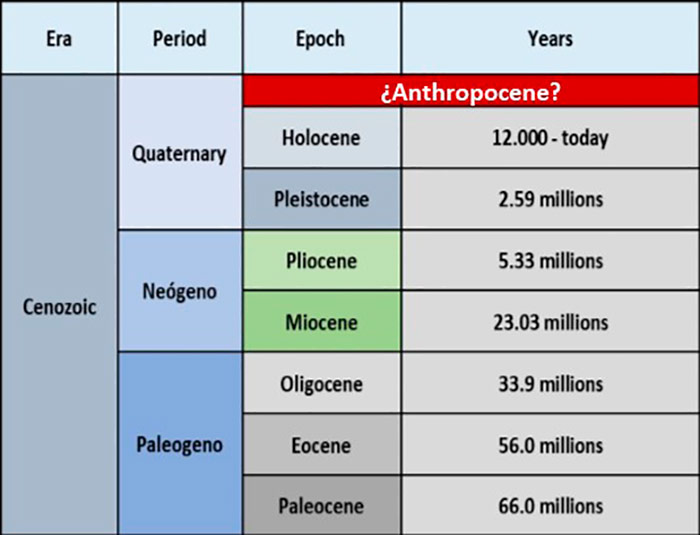
Infographic: SGK-PLANET
An open discussion
Are we in the Anthropocene?
For a change of geological epoch to be accepted they must comply with certain canons established by the nomenclature of geology. However, the Anthropocene concept is in fact accepted because it circulates through books and thousands of media.
How we got to the Anthropocene
The history of the Earth in 4,600 million years
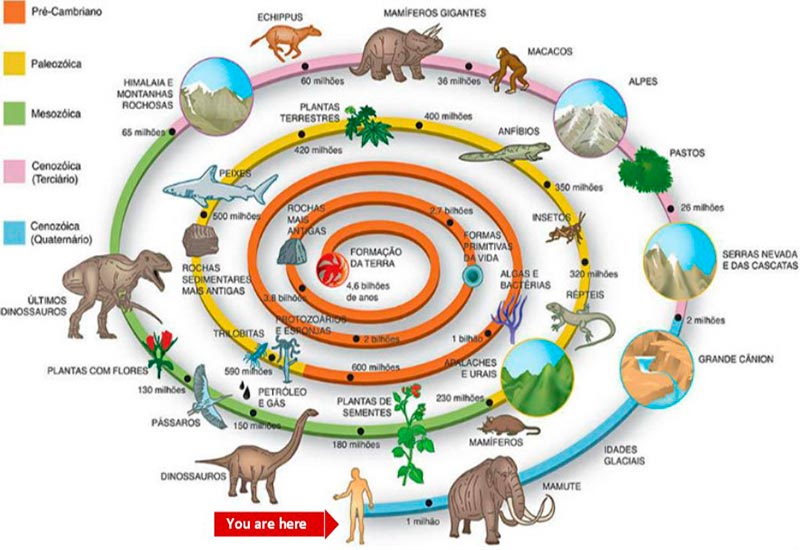
Anthropocene or “Age of Homo sapiens”
The Age of Man – Documentary about the Anthropocene (Golden Award at Deauville Green Awards 2016)
With the cancellation of extreme cold, 12,000 years ago, entered a long season of mild climate that has lasted to this day. This bonanza was exploited by Homo sapiens to expand throughout the latitudes and heights of the planet. The few survivors of the heavy Ice Age were so successful that they succeeded in multiplying their descendants to about 8,500 million individuals today.
The evolution of the Homo genre, an unprecedented race
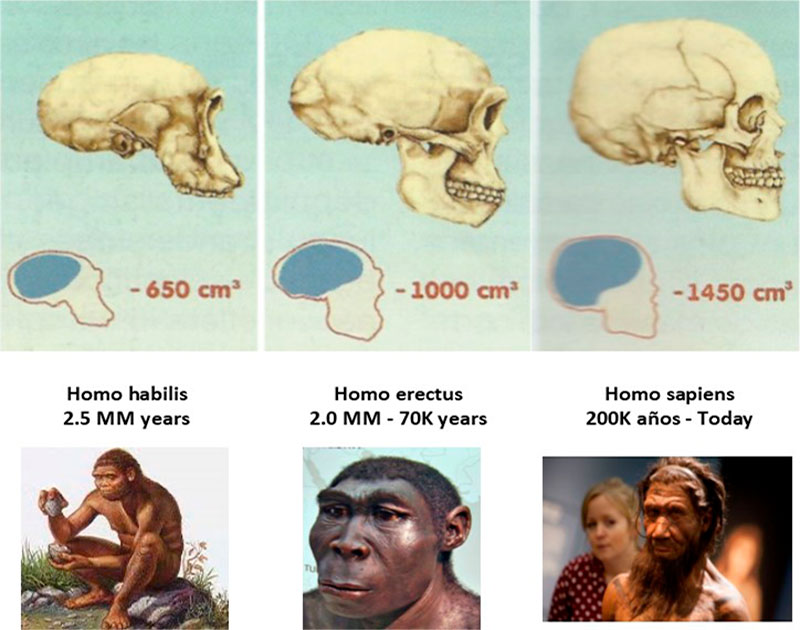
Infografía: SGK-PLANET
Evolution of the genus Homo
What Happened Before History? Human origins
In a period of 2.5 million years, the brain size of our genre has gone from less than 650 cc to 1450 cc. This evolutionary career was initiated by Homo habilis, the first manufacturer of stone utensils, which began the Paleolithic and incidentally earned the title of first Homo.
The evolution of the genus Homo has been so dizzying that it constitutes an amazing event that is unparalleled on our planet. This rapid progress has been observed through the measurements of the skulls found by paleoanthropologists, with which they could deduce brain sizes. Due to this very high speed, in times as short as 40,000 or 100,000 years the measurement of brain size is not valid to be able to calibrate the evolution of Homo sapiens.
Now the evolution of Homo sapiens is measured in a different way
Due to this very high speed, in times as short as 40,000 or 100,000 years the measurement of brain size is not valid to calibrate the evolution of Homo sapiens.
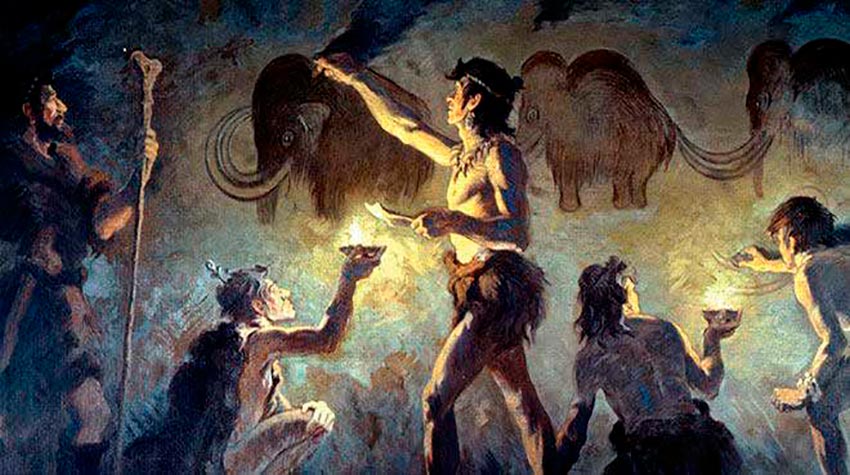
Charles R. Knight 1920 – Cro-Magnon artists painting woolly mammoths in Font-de-Gaume, AMNH.
Source: Wikimedia commons
Instead, we have resorted to the study of the cultural evolution of our species. In the last part of the glaciation, in its coldest lapse, the truth “Age of Ice”, which lasted about 15,000 years, emerged the first artists and shamans. The painters captured their beautiful creations through their superb works on the walls and ceilings of the caverns. A splendid heritage with which Homo sapiens showed its new qualities.
The first artists of the world
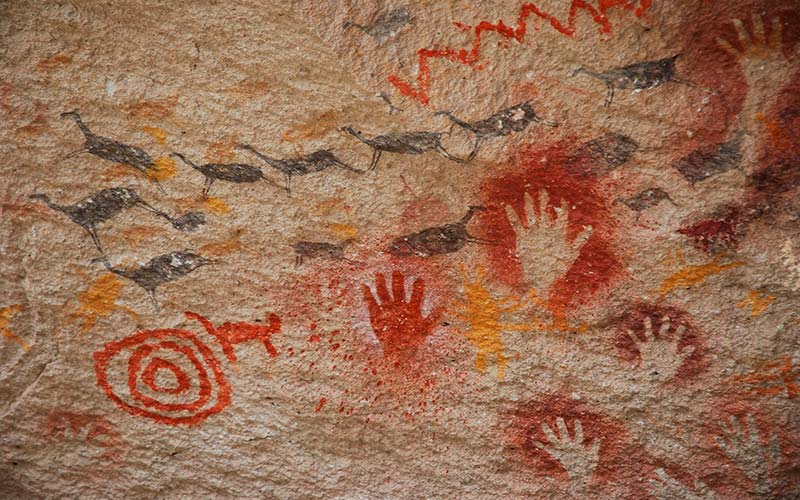
Cave paintings “Cave of the Hands” Province of Santa Cruz
Painters captured their beautiful creations through their exalted works on the walls and ceilings of caves. A splendid heritage with which Homo sapiens demonstrated its new qualities.
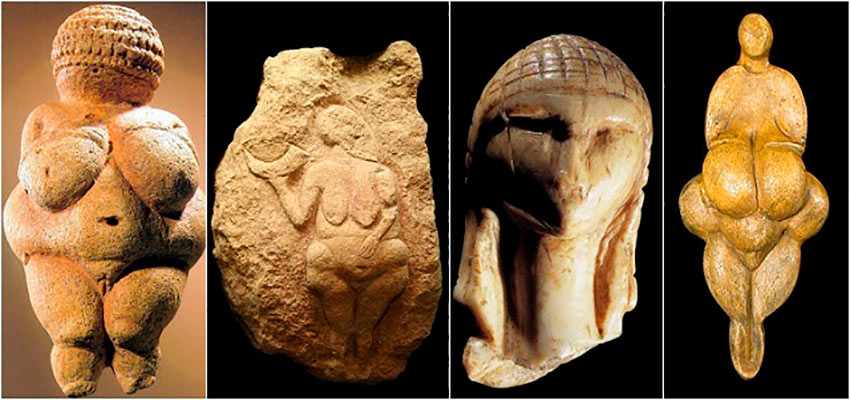
Representations of the Venus of the Paleolithic
Source: enciclopediarte.com
Since then, the evolution is measured through our work, thought and beliefs, but also by our actions. Through its science and technique, arts and letters, thought and religion. That is, their weapons, utensils, painting, sculpture, architecture, literature, creed, philosophy, science, technology, commerce and industry. But also its low capacity to care for and respect the environment.
Ur, the oldest city
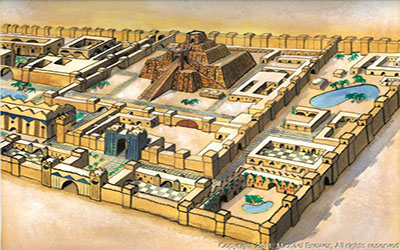
Credit: Michael Brewer
Egypt
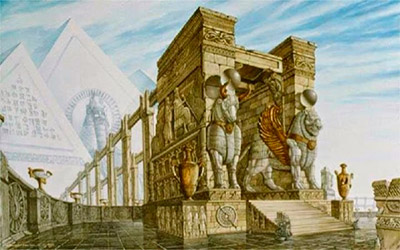
Source: Pinterest.com
Babylon
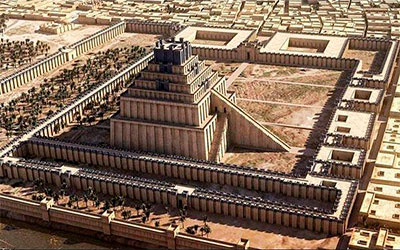
Source: Sobrehistoria.com
Unbeatable inventions for 3500 years

Dreamstime
The Babylonians invented the day of 24 hours, the hour of 60 minutes, the minute of 60 seconds and the week of seven days. The months were 29 or 30 days and the years were 12 months, which were named with the signs of the zodiac. Every so often they added a month thirteen to correct the calendar according to the real solar year. As a symbol they placed the crow and that month 13 was considered unfortunate. In 3,500 years, despite the space age, computers, the internet and artificial intelligence, none of this has been overcome. The measurement of time, the zodiacal signs and the fame of bad luck of the number 13 are still the same that the brilliant Babylonians created three and a half millennia ago.
Philosophy and sciences flourish in Pericles’ Athens
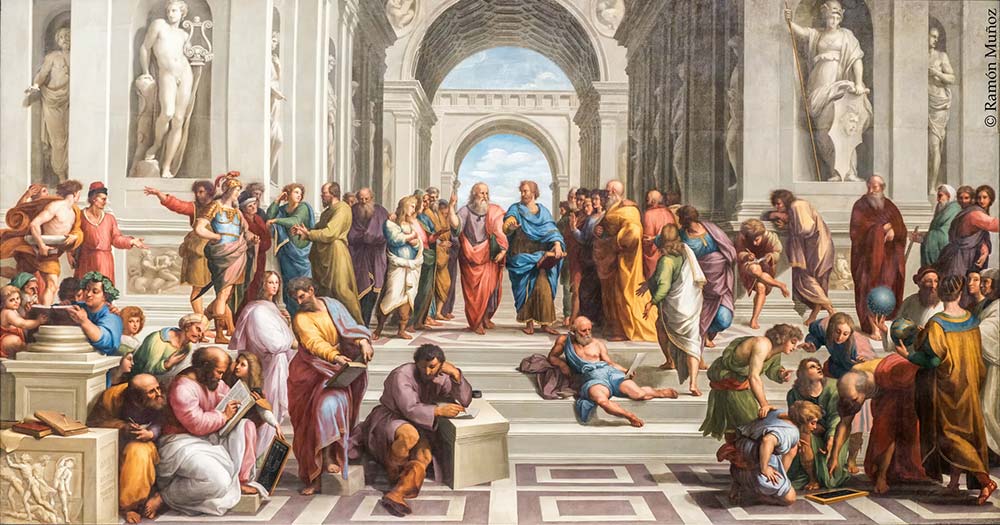
Rafael Sanzio – The school of Athens
In the Pericles Greece, 2400 years ago, there was an explosion of thought, art, letters, theater like never seen on the planet. In the golden age philosophers, poets, sculptors and architects arose everywhere. Herodotus of Halicarnassus was the first historian of the world. Aeschylus, Sophocles and Euripides art masters of tragedy. Socrates, Plato and Aristotle are the fathers of philosophy and the foundations of the sciences. The Greeks laid the foundations of the Western world and their influence reaches our days.
Ancient Rome
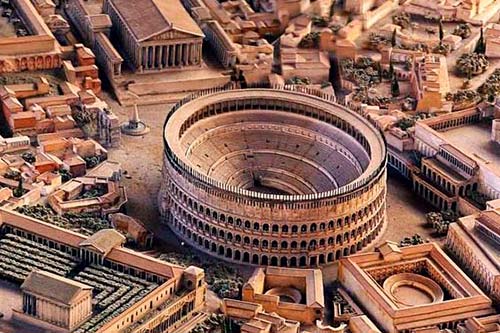
Source: Pinterest.com.kr
The Middle Ages
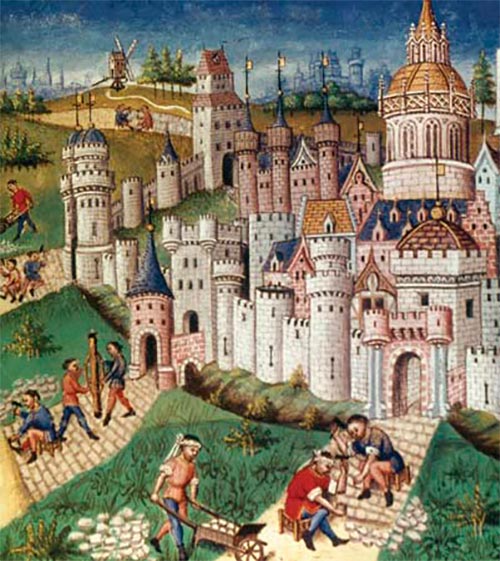
Source: Sobrehistoria.com
The Renaissance

Pietro Perugino – Delivery of the Keys to St. Peter
The Industrial Revolution is born with it chimneys coal and global warming

Historical background of industrial production
Source: Timetoast.com
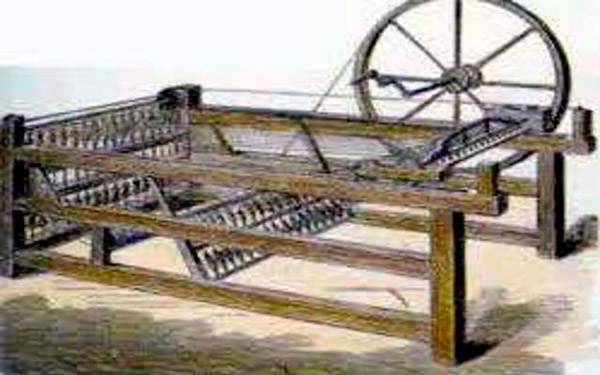
1768 Hargreaves spinning machine
Source: Natureduca.com
The Industrial Revolution occurred in England as a gigantic transformation of the production methods of the textile industry. In 1733 John Kay invented a machine to manufacture fabrics, although still very rudimentary, made of wood and moved by human energy. Only later would come more sophisticated machines of iron or steel, moved with the driving force of steam.

Steam machine engine from James Watt. February 1765
Source: Timetoast.com Inventions of the industry revolution.
In 1775 James Watt managed to manufacture his first steam engine, which would soon become the engine of automation, not only of the textile industry, but of transportation. Without trains, railroads, and steamships, it would have been impossible to distribute the mountain of merchandise spewed by the increasingly fast machines. Products became cheaper at a giant pace, thanks to automation and the misery wages paid by factories.
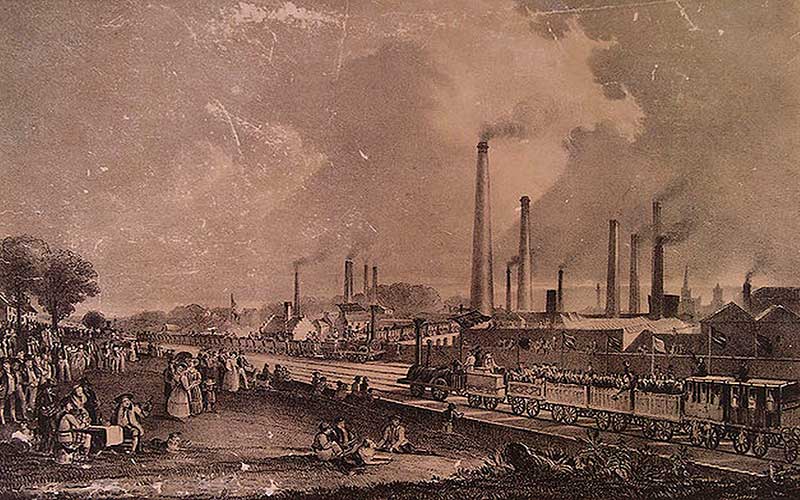
Source: Wikimedia – Europapress.es
Factories require a large amount of coal, the dirtiest of fossil fuels. The chimneys proliferate in England and then throughout the world. Slowly the CO2 emissions to the atmosphere begin, every time in greater quantity, that would not stop until today. The time of the beginning of the Industrial Revolution has been taken as a reference in the objectives of the Paris Agreement in the fight of climate change and to limit global warming.
The agri-food revolution in the United States
The Industrial Revolution, on the other side of the Atlantic, took different directions. Automation in the United States was initially oriented towards agricultural and food production.

Source: Wikipedia
When the Great Exhibition of London was inaugurated in 1851, based in the spectacular Crystal Palace, the first glass and steel building and grandfather of the modern skyscrapers, thousands of visitors stopped in front of the stand of Cyrus McCormick to admire his latest model mower, still pulled by a horse. This portent of engineering made horizontal cuts and included a novel mechanism that stacked wheat ears in bundles and then tied them automatically. Those were the precursor times of field automation.

Recommended reading. Article in SGK-PLANET
The bubble of climate
It is a brief history of the agri-food revolution on American soil, since 1860 and well into the twentieth century. From the steam engine to the gasoline era, which soon transferred to the rest of the world. In 1950 begins the worry by its negative effects on the climate. Read +
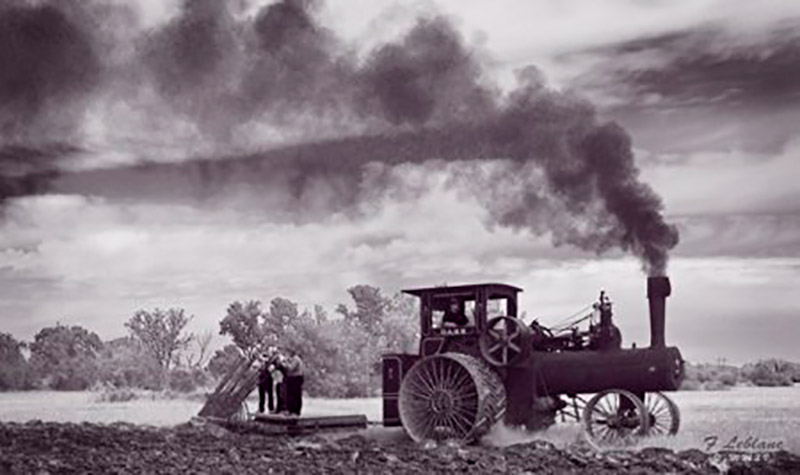
The first CO2 emissions
from agricultural machinery
in America
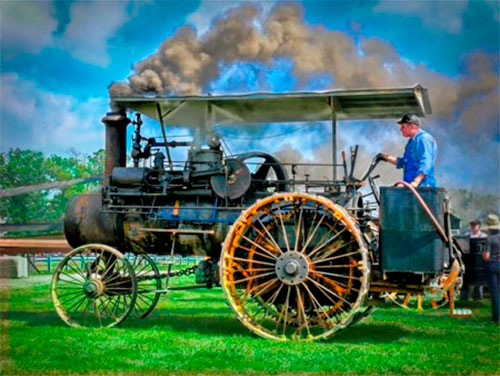
Source:

Source:

Source:
And we enter in the 21st century
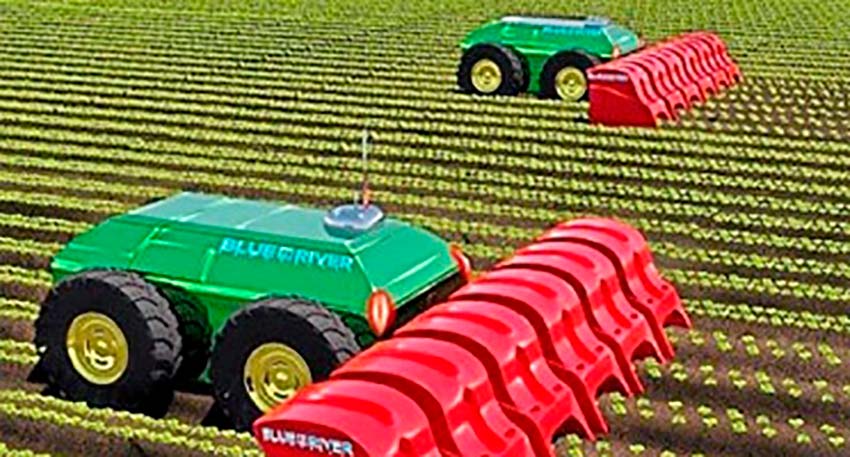
Blue River Technology
Source: Cnet.com
Agricultural robotics
more crops in less time
Faster soil degradation?
More fields and fewer ecosystems?
In the image
The world capital of lettuce
Located in Salinas Valley, California. Through robotization, daily tons of the product are loaded for internal consumption and export.
The great demographic growth in the 20st century

Source: Climate101.org
World Population History
Recommended reading
At the beginning of the 1900s it included some 1,600 million people, but this amount, despite the two world wars and the Great Depression, almost doubled by 1960, when the population was around 3,000 million people. At the end of the century, we were 6,000 million people and by the beginning of 2025, the population is projected to reach 9,000 million inhabitants.
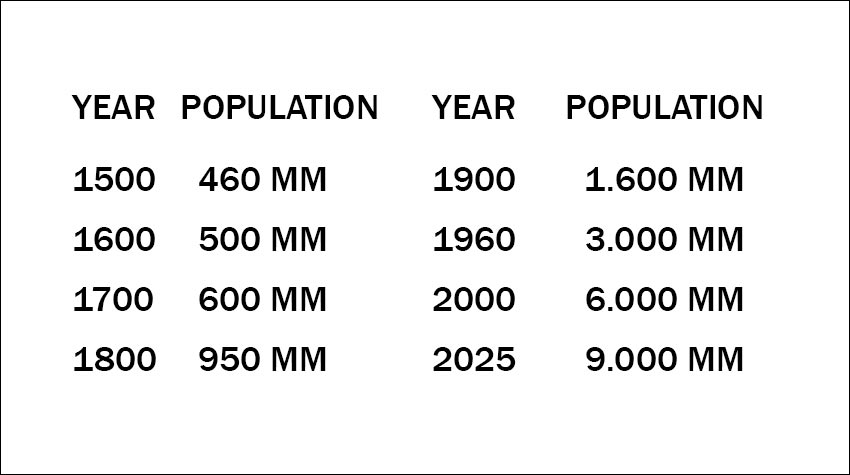
SGK-PLANET
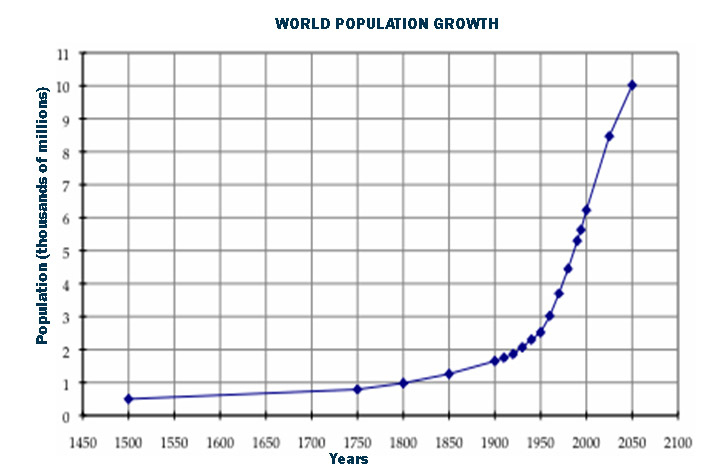
Source: apuntesdedemografia.com
Brief history of the Anthropocene concept
Anthropocene is a compound word that comes from the Greek, “anthropos”, human being, and “kainos”, new. It has also been called the “Age of humans”. It is a name that is intended to be assigned to a new era, successor to the Holocene, the time in which we live.
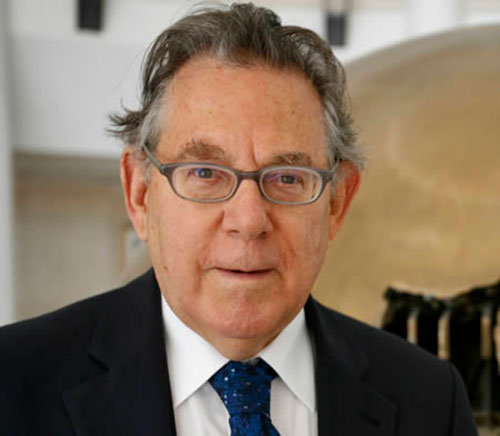
Paul Crutzen
Source: environment-prize.com
Paul Crutzen. Dutch scientist Nobel Prize in Chemistry. It was he who coined the name of Anthropocene in 2000 to indicate the time when human activities began to cause biological and geophysical changes on a planetary scale. He tells himself that he was at a conference where someone commented on the Holocene. “At that time I thought that such term was incorrect, because the world has changed too much. So I said: No, we are in the Anthropocene !, creating the word in the heat of that moment. Everyone was surprised… ”
Scientists Johan Rockström from Sweden and Will Steffen from the United States,
together with scientists from the Stockholm Resilience Center,
established the theory of the “nine limits of the planet.”
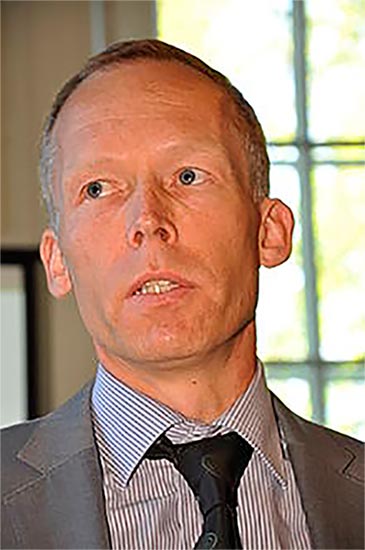
Johan Rockström
Source: ko.m.wikipedia.org
Johan Rockström. He is executive director of the Stockholm Resilience Center. He teaches natural resources management at the University of Stockholm. In 2009 he led, along with Will Steffen, a group of 28 international scientists from the Stockholm Resilience Center (SRC) and the Australian National University. The objective was to define a “safe space for human development” to be used by governments, international organizations, civil society, the private sector and the scientific community. From here came the concept of the “Nine boundaries of the planet.”
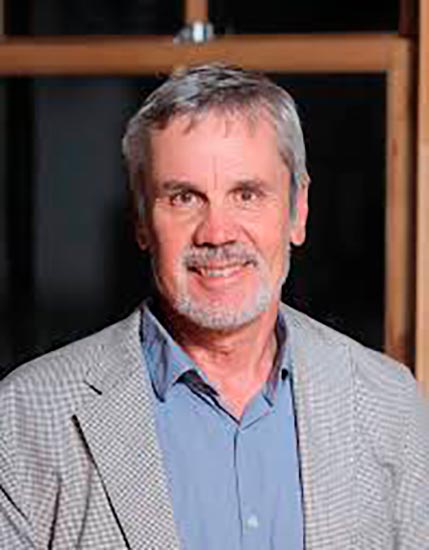
Will Steffen
Source: futureearth.org
Will Steffen. He is part of the Scientific Advisory Committee of the Climate Center in Korea. He is a visiting researcher at the Stockholm Resilience Center, as a scientific advisor to the Department of Climate Change and Energy Efficiency. He has been a prominent advocate along with Paul Crutzen of the Anthropocene concept, and he began an international debate on planetary boundaries and the “safe operational space” for humanity.
The Stockholm Resilience Center
and the theory of the nine limits of the planet
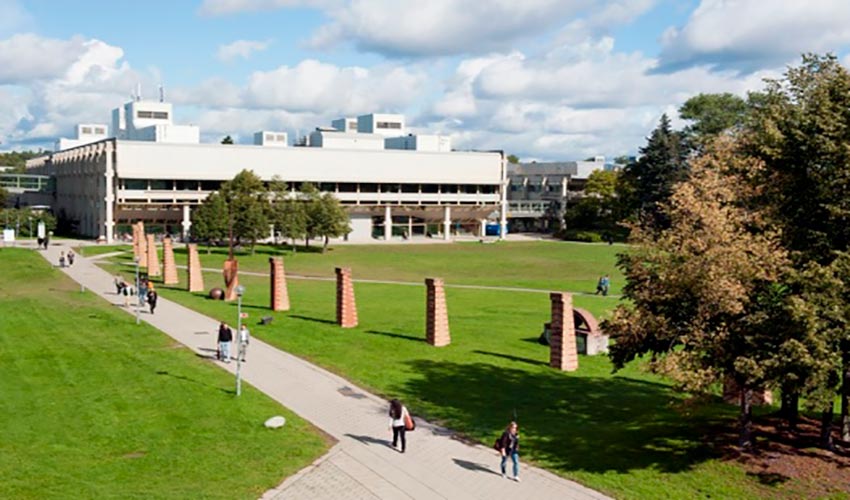
Image: Eva Dalin/misu.su.se
Johan Rockström and Will Steffen grouped a series of data obtained by researchers at different times. In joint work with scientists from the Resilience Center in Stockholm, they produced in 2009 and 2015 a list with “the nine planetary boundaries“.
These borders would be extremely dangerous to trespass, which has already occurred in four of them:
- The climate change
- Loss of biosphere integrity
- Land system change
- Alteration of biogeochemical fluxes (in which the phosphorus and nitrogen cycles play an essential role)
The other five boundaries of the planet:
- Stratospheric ozone depletion
- Freshwater consumption
- Ocean acidification
- Atmospheric aerosol loading
- Novel entities. Chemical pollution
The theory of the nine boundaries of the Planet

What does “the great acceleration” mean?
As can be seen, these planetary limits constitute a referential framework to monitor nine complex processes, fundamental for the stability of the “Earth System”. The Stockholm Resilience Center showed how these indicators had skyrocketed since the 1950s. This time they called it “the great acceleration.” Others went further and spoke of a hyper acceleration, which began in the 1970s. During this period, none of the nine limits of the planet had been crossed and the corrective measures that are now much harder to return could have been taken to its state of the end of World War II.

Source: apocalypsesurvivalist.com
“The great fog of 1952” of London
A warning bell that gave an important boost to environmental movements.
There were many voices that rose between 1950 and 1970 expressing their concern for the future of the planet. Perhaps that is why the First Earth Summit was convened in the capital of Sweden in 1972. From this important conference came the Stockholm Declaration, but most of its beautiful postulates were forgotten almost immediately, such as the hostile deforestation of the Borneo rainforest, (1970-2000), the third largest island in the world, shared by Indonesia, Malaysia and Brunei.
First Earth
Summit
Stockholm – 1972
Has our species entered into involution?
Those responsible for the hostile deforestation of the forests, the slaughter of animals, the compulsive searches for oil and gas fields or new methods of extracting fossil fuels, consciously or unconsciously, are pushing back the hitherto successful Homo sapiens march. On the other hand, the population in general is passive and indifferent to the problems of the planet.
We are facing a dangerous process. We are the last survivors of the genus Homo. Before us, at least three dozen Homo species have been left behind. Homo sapiens believe us so powerful that we think that thanks to our sciences and knowledge, this cannot happen to us. But due to our attitude our continuity is not guaranteed and we may not be the exception.
Why has not the Anthropocene been formalized?
The Geologists talk
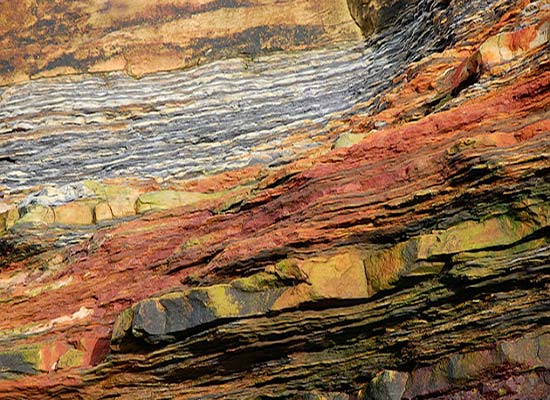
Source: wikisabio.com
The deterioration of the environment, the measurable increase in PPM, parts per million of CO2 in the atmosphere, as well as the observation of ozone holes, the constant increase in heat officially registered on the planet, the melting of glaciers and ice Arctic, are not compatible with the methods used by geology, and therefore the name Anthropocene does not meet the traditional nomenclature of stratigraphy, and cannot be defined as a geological age.
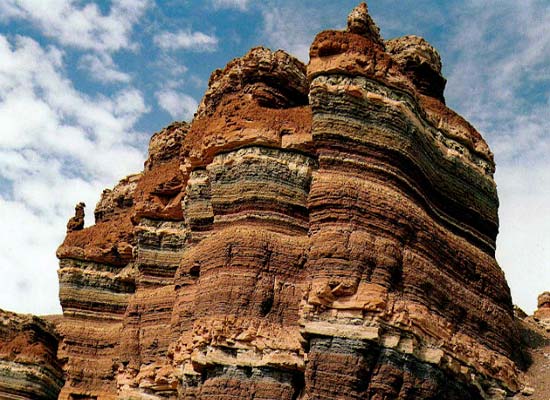
Source: geofrik.com
Stanley Finney, head of the International Committee on Stratigraphy, said: “The geological time scale (reference frame to calculate the ages of the Earth) is measured from the records of rocks, which give evidence of our history and time, either to talk about mass extinctions, climate change or the types of life on the planet. My concern with the Anthropocene is that it is not documented with rock bodies.”
The supporters of officializing the Anthropocene talk
A team of high-level researchers located radioactive waste left by atomic bombs in the Ría de Bilbao, Spain. “We have already changed the Earth: the Anthropocene is the moment in which humans manage to change the life cycle of the planet, when humans remove the planet from its natural variability”, explains Alejandro Cearreta, Spanish scientist, member of the team made up of 35 specialists. After seven years of research they agreed to consider the Anthropocene a new geological epoch, included within the Quaternary period.
The Anthropocene
Humans created a new Geological Epoch
What is stratigraphy and historical geology?
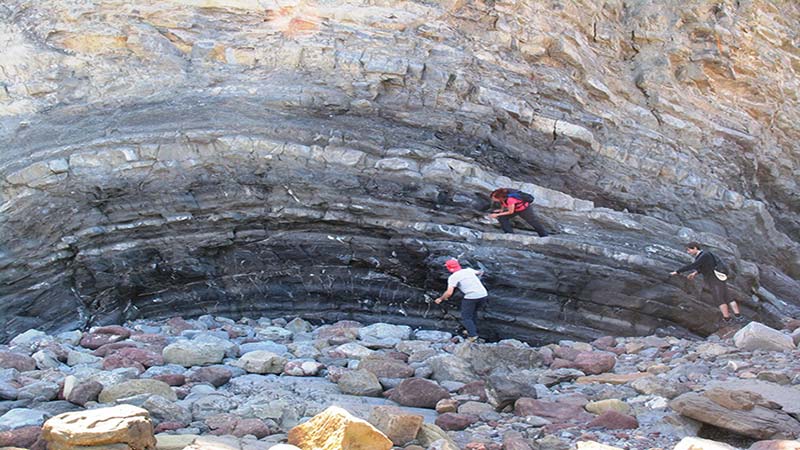
Source: cei.uniovi.es
Stratigraphy is the branch of geology that study of some types of rocks, through their identification, description and sequence, both vertical and horizontal.
Would the situation on the planet improve somewhat by changing
the denomination of the time in which we live?
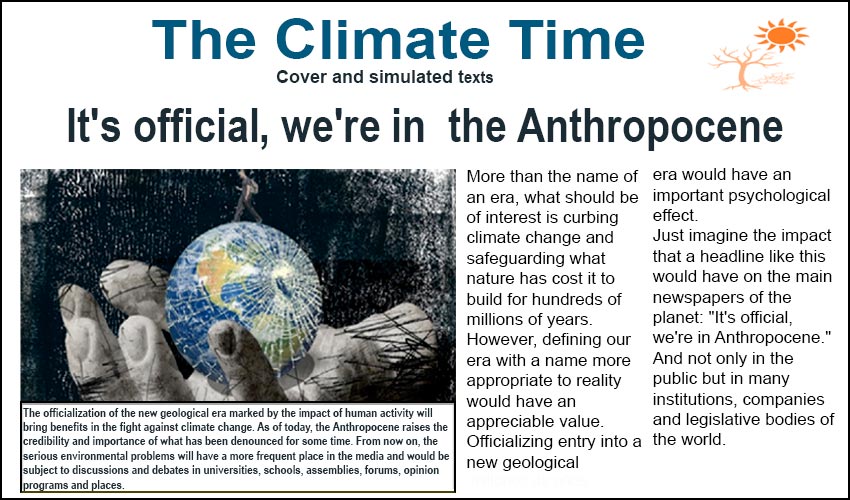
Infografophic: Aixa Chacín para SGK-PLANET
Could the established parameters be changed
to define a new geological era?

Source: Wikimedia commons
Just as we stopped measuring the growth of the brain to establish our evolutionary line and it was changed by observing our cultural progress, it would also be possible to modify or complement the stratigraphy with other methods. These could be more in accord with the speed and the behavior of the human societies in the present and would allow to officialize the Anthropocene like a new geologic time.
For example, the parts per million (PPM) of CO2 in the atmosphere were in the order of 300 PPM until the appearance of Homo sapiens. These have increased to more than 400 PPM and continue to rise due to greenhouse gas emissions. Is not this equivalent to a human footprint in the atmosphere? Is not it as valid as the most obvious human footprint on rocks? The increase in PPMs can significantly modify the Earth system and in fact it is doing so through global warming and climate change.
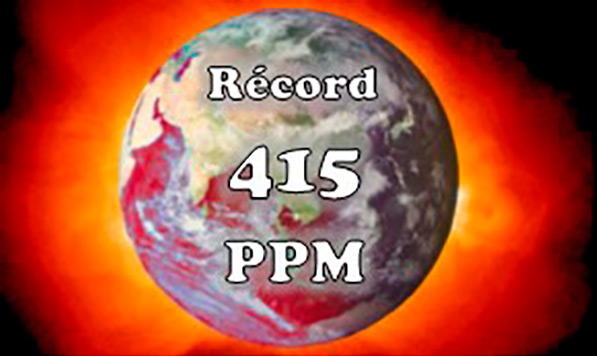
Source: SGK-PLANET
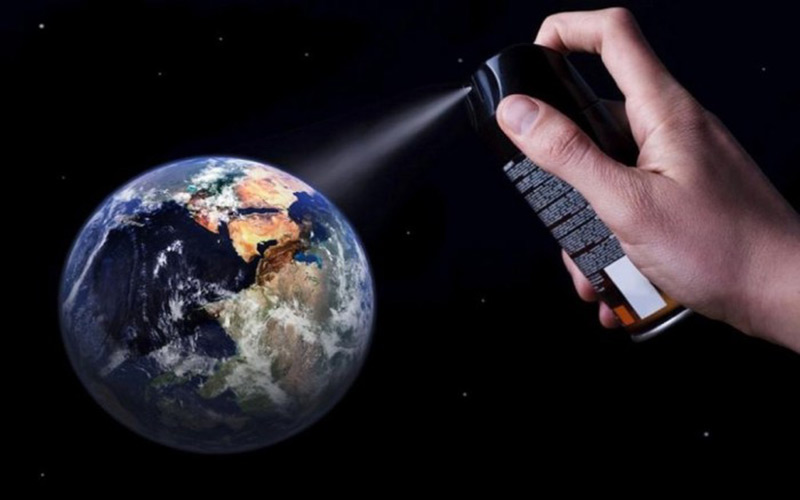
Source: buenamente.co
The widening of the holes in the ozone layer is clear evidence of the effect of human activities. The holes were enlarged as a result of the emissions of chlorofluorocarbon compounds into the atmosphere, used as fluids in refrigerators and atomizers. They were measured and photographed at the time and they are given a solution. Obviously, ozone holes are not signs on rocks, but traces made by us humans.
What is the solution to avoid a catastrophe?
The solution is contained in the Paris Agreement, the ambitious global agreement to fight climate change, negotiated in the framework of COP 21, Paris 2015. It was adopted by 197 countries and its implementation will begin in 2020.
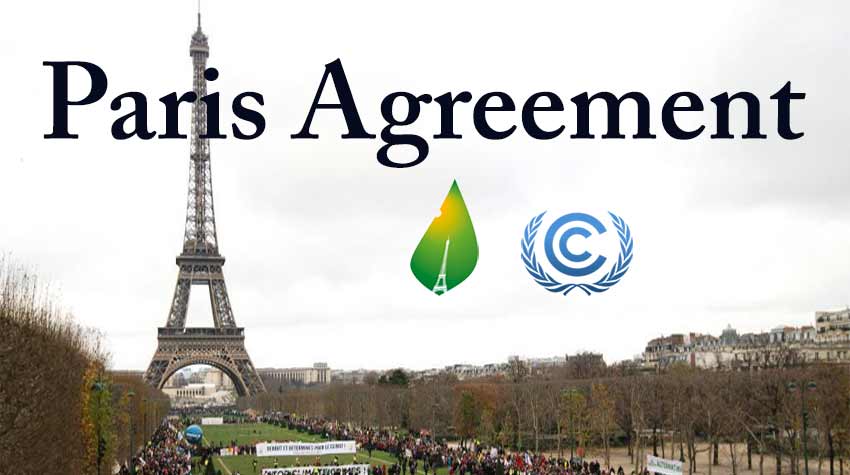
Source: SGK-PLANET
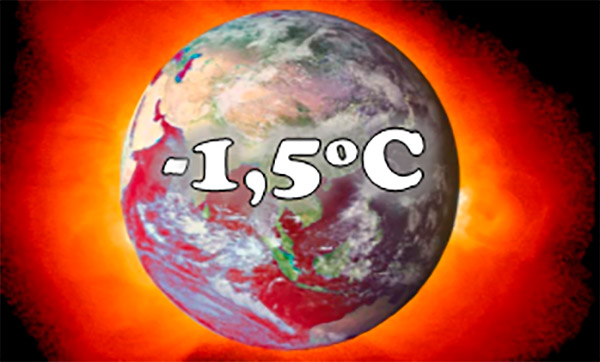
Source: SGK-PLANET
The fundamental premise of the Paris Agreement is to limit the increase in global temperature to 2º C, reduced to 1.5º C in 2018, on the recommendation of the “Fifth Report of the IPCC” from its level prior to the Industrial Revolution. To this end, GHG emissions must be reduced and eliminated, caused by fossil fuels such as oil, gas and coal, which, when burned, release carbon dioxide into the atmosphere (CO2).
This would prevent the increase in global temperature, the cause of climate change and its consequences. In this way we could stop the increase in the level of the seas, floods, landslides, hurricanes, tornadoes, forest fires and other catastrophic phenomena, capable of endangering many species that inhabit the Earth, including Homo sapiens.


